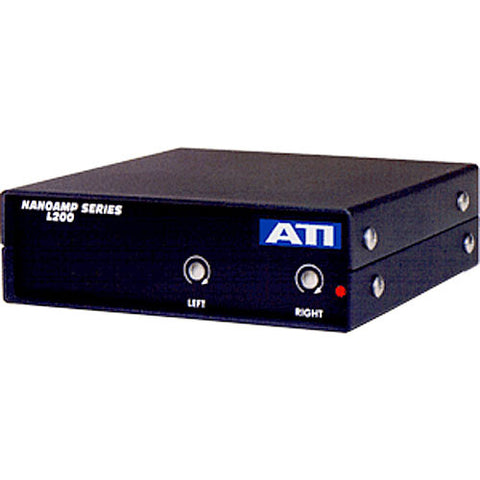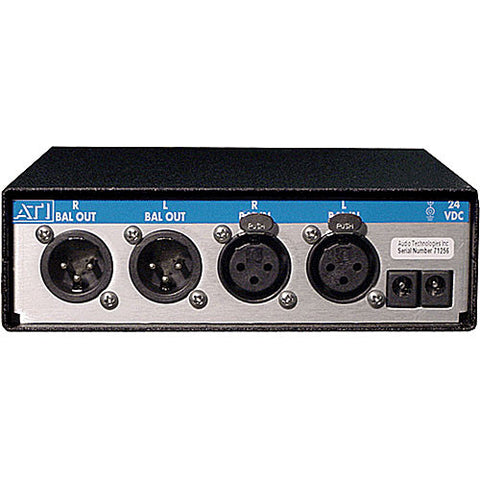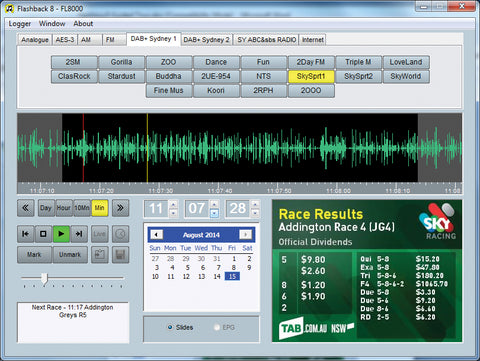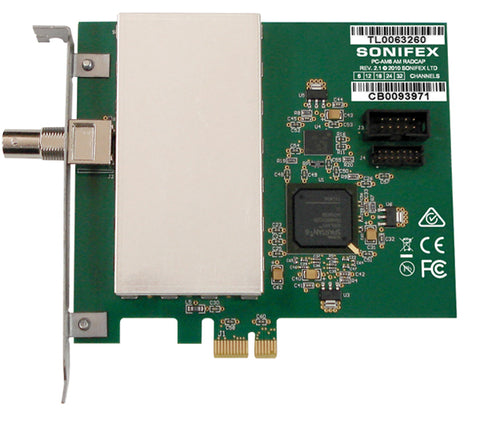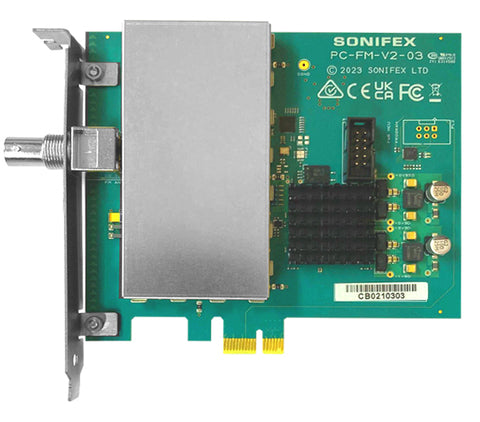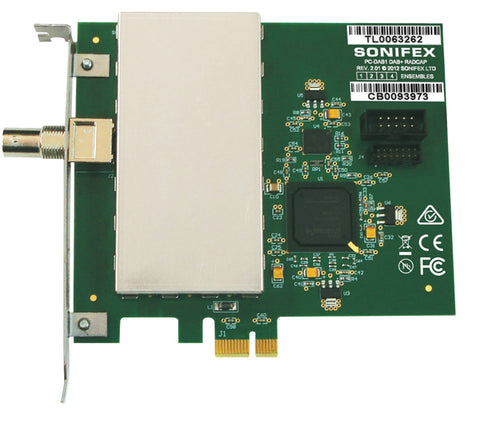Sonifex RB-DS2 Stereo Delay Synchroniser & Time-Zone Delay (1U)
Vendor: Sonifex
Available

Sonifex RB-DS2 Stereo Delay Synchroniser & Time-Zone Delay (1U)
Resynchronizing audio to video after delay procedures including standards conversion, transmission delay, logo insertion, video aspect ratio conversion, and network delays is possible using the RB-DS2 stereo audio delay synchronizer. It can be used in fixed installations to rectify an audio delay that is permanent or sporadically to give repair, like in the case of live links. The RB-DS2 has exceptional sound quality and can handle digital audio streams up to 96kHz, 24-bit. Silent switching is employed to deliver the purest, most seamless audio delay possible.
The RB-DS2 features three-pin XLR connections for both balanced analog and AES/EBU digital audio inputs and outputs. It can function as a hybrid A/D and D/A device, which enables the delaying of analogue inputs and the output of AES/EBU or vice versa. Although it is a stereo delay, it can also be used as a mono delay only, as a dual mono delay, or to process each audio line independently. The RB-DS2's default delay time is up to 10.5 seconds at 96kHz sampling, 24-bit (or 42 seconds at 48kHz, 16-bit). Up to 2GB of memory can be accessible via an internal Compact FlashTM extension, allowing for delay times of more than 4 hours. This can be used, for instance, to move a broadcast program one hour for a satellite replay or to delay a program output across many time zones. Samples, fields, frames, meters, milliseconds, and, with the Compact FlashTM expansion, hh:mm: ss can all be chosen as delay durations. Definitions of frames and fields can apply to either PAL (25 frames) or NTSC (30 frames) broadcasts.
A front panel blue vacuum fluorescent display with a rotary controller is used for selecting the various settings of the delay, which include the source (analog or digital), channels, sample rate, sample bit width, format (PAL or NTSC), delay units and the delay itself. Additionally, input peak digits can be selected from +12dBu, +18dBu, and +24dBu for FSD and two left and right pre-set potentiometers on the rear panel allow the input gain range to be altered by ±3dB around the selected peak digits.
The software can be used to change the analog output gain range from -6dBu to +24dBu output level, ref FSD. A front panel bypass button disengages electro-mechanical relays to direct both analog and digital inputs to their respective outputs. Analog and digital outputs can be muted independently of one another. When there is a power outage, this is also automatically disconnected. Eight configuration settings can save all of the unit's settings. Any setting, like delay time or bypass, can be instantly changed using a GPI signal. These configurations can be read, updated, saved, and loaded. They can also be remotely loaded using one of the eight GPI connectors. The RB-DS2 additionally features four remote outputs that can be used for signaling and an RS232 serial interface for remote control of the device. When using a remote control to operate the device or when physical security is needed, the front panel controls can be locked out.
A/D Specification |
|
| Maximum Input Level: | +28dBu |
| Input Impedance: | > 10kΩ bridging |
| Analogue & Digital Input Levels: | Selectable +12dBu, +18dBu, +24dBu for FSD |
| Analogue Pre-set Input Gain Range: | Adjustable 3dB loss to 3dB gain (L & R adjust) |
| Signal to Noise: | Better than -101dBFS (RMS A-weighted at 24bit) |
| Dynamic Range: | > 110dB |
| Distortion & Noise: | > 96dB THD + N at 1kHz |
D/A Specification |
|
| Maximum Output Level: | +24dBu |
| Output Impedance: | < 50Ω |
| Dynamic Range: | > 100dB |
| Analogue Output Gain Range: | Selectable -6dBu to +24dBu output level, ref FSD |
| Sampling Frequency: | Selectable 32kHz, 44.1kHz, 48kHz 64kHz, 88.2kHz or 96kHz, |
| Sample Width: | Selectable 16bit or 24bit |
| Channels: | Stereo or dual mono |
| Format (Fields & Frames): | PAL, NTSC |
| Delay Units: | Samples, fields, frames, milliseconds, hh:mm:ss, (with CF expansion) |
| Maximum Delay: | 10.5 seconds @ 96kHz, 24bit, stereo (excluding memory expansion) |
Rear Panel Connections |
|
| Analogue Inputs: | 2 x XLR 3 pin female (balanced) (L & R |
| Analogue Outputs: | 2 x XLR 3 pin male (balanced) (L & R) |
| Digital Inputs: | 1 x AES/EBU XLR 3 pin female |
| Digital Outputs: | 1 x AES/EBU XLR 3 pin male |
| Remote I/O Port: | 15-way ‘D’-type plug, 8 GPI inputs, 4 GPI outputs |
| Serial Comms Port: | 9-way ‘D’-type plug |
| Memory Expansion: | Internal Compact Flash™ storage card supporting up to 2GB. CF cards must be PIO Type 4 or higher. |
| Mains Input: | Filtered IEC, continuously rated 85-264 VAC, 47-63Hz, fused, 60W peak, 30W average |
| Fuse Rating: | Anti-surge fuse 2A 20 x 5mm |
Front Panel Controls |
|
| Display: | Vacuum fluorescent display |
| System Navigation: | Rotary selector with integral push-switch |
| Audio Bypass: | Via push-button |
Equipment Type |
|
| RB-DS2: | Stereo delay synchroniser & time-zone delay |
Physical Specification |
|
| Dimensions (Raw): | 48cm (W) x 15.8cm (D *) x 4.2cm (H) (1U) 19” (W) x 6.2” (D*) x 1.7” (H) (1U) |
| Dimensions (Boxed): | 59cm (W) x 27.5cm (D*) x 11cm (H) 23.2” (W) x 10.8” (D*) x 4.3” (H) |
| Weight | Nett: 1.6kg Gross: 2.3kg Nett: 3.5lbs Gross: 4.8lbs |
| * Note that this product is deeper than standard Redboxes | |
 USD
USD EUR
EUR
 AUD
AUD
 GBP
GBP
 JPY
JPY





